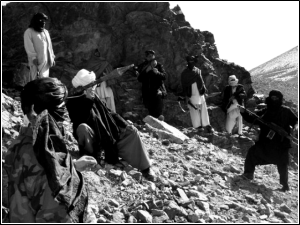Euran Cold War
| Euran Cold War | |||||||
|---|---|---|---|---|---|---|---|
 Alkhivan militants prepare an ambush in the Nad Ali-Gizab canyon on the 30th Line |
|||||||
|
|||||||
| Belligerents | |||||||
| Commanders and leaders | |||||||
| Jean Carmichael/Eli Naveh Edgard II/Leon Gambetta Szhmuel Astopov Moshe Goltz Bartolomeo Henzelli Guy Zalmanov Shlomo Bar Ilan | Ardashir Khan Hesam Jahandar Malliki Tosha Farzan Shahanshah Daniel Kalirion Nathan I Matt Kovac Mukhtar Ibrahim Ramidi |
||||||
| Units involved | |||||||
| Ashkenatzer Militerischer Kraft (AMK) Alexandrian Imperial Armed Forces (AIAF) Shabaab Al-Sinar | Imperial Babkhan Armed Forces (IBAF) Union Defence Force (UDF) Ocian Defence Force (ODF) |
||||||
| Strength | |||||||
| IBAF: 304,227 personnel, 4,000 armoured fighting vehicles, 390 aircraft, 33 warships, 7 submarines (1589 AN) | |||||||
Introduction
The Euran Cold War, also known as the Euran Emergency and initially the Ashkenatzi-Babkhan Cold War was a series of heightened diplomatic tensions beginning in 2011 between Babkha and Ashkenatza on the continent of Eura, originating in a territorial dispute between the former allies over the Ashkenatzi Mahoz HaSephardim territory. Over time, it came to have a wider reaching impact on intermicronational diplomacy on Micras due to Ashkenatza finding common cause with Alexandria, whose Luthoria territory in South-Eastern Eura was also coveted by a resurgent Babkha, eager to reunify all its historic territories on Eura, and Babkha's ability to bring its significant soft power and diplomatic influence into play to form a broad coalition supporting its cause.
The dispute began as a friendly diplomatic disagreement between allies and rapidly deteriorated into heightened tensions which saw both sides wage an undercover guerrilla war on the borderlands of their Euran territories. Targeted assassinations, sabotage, propaganda campaigns, kidnapping and espionage became commonplace as both sides began to abandon hope of a diplomatic solution. Babkha's Raspur Pact, formalised in June 2012, saw Antica, Elwynn, The Nordic Union, and Ocia consolidate into one political bloc, whilst Ashkenatza and Alexandria further strengthened their already existing military alliance.
By late June 2012, skirmishes around the notorious 30th Line, the live border and Ashkenatzi defensive line between Babkhan controlled Alkhiva and the Mahoz HaSephardim, had become an almost daily occurrence, and similar skirmishes were beginning to emerge in Alexandrian Luthoria and Ocian Monovia. In Benacia, a coup attempt by the Emir of Sathrati against the Elwynnese government had led to increased tensions along the Ashkenatzi-Elwynnese border- it was becoming clear that the Euran conflict would not simply remain an Euran question.







